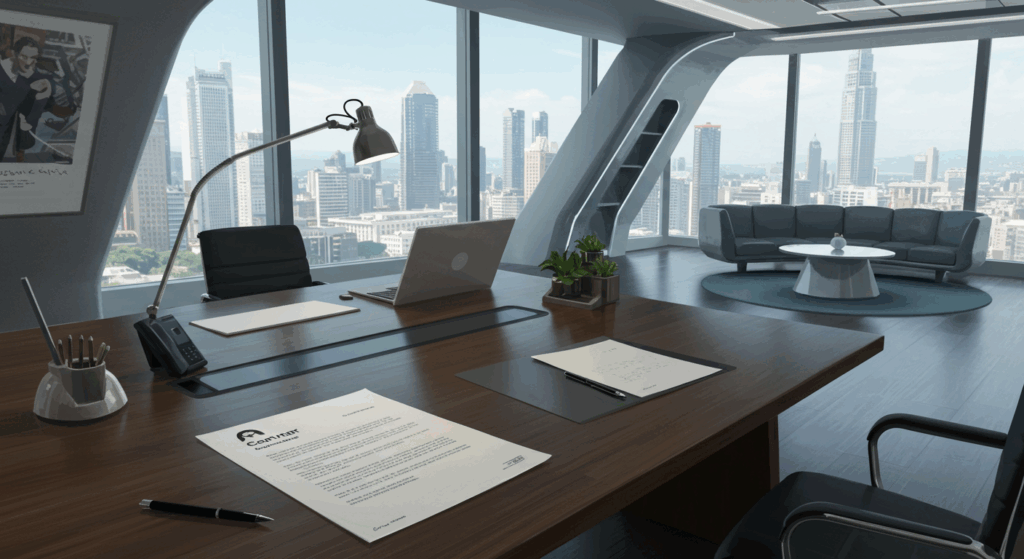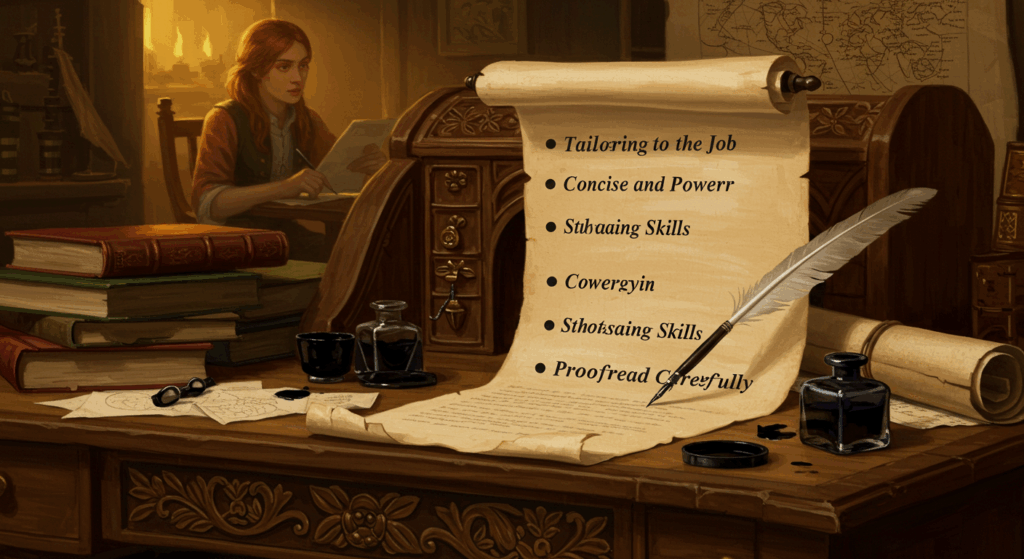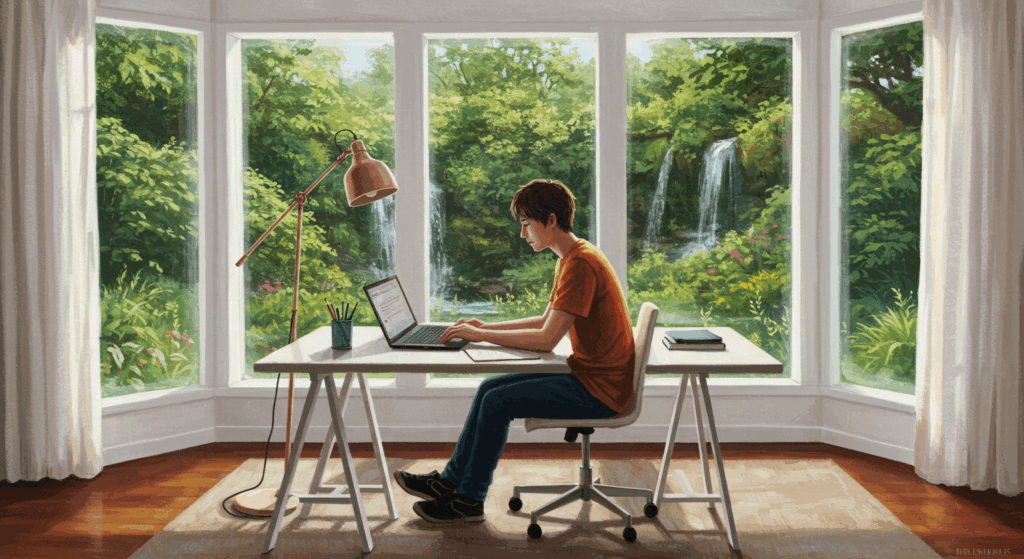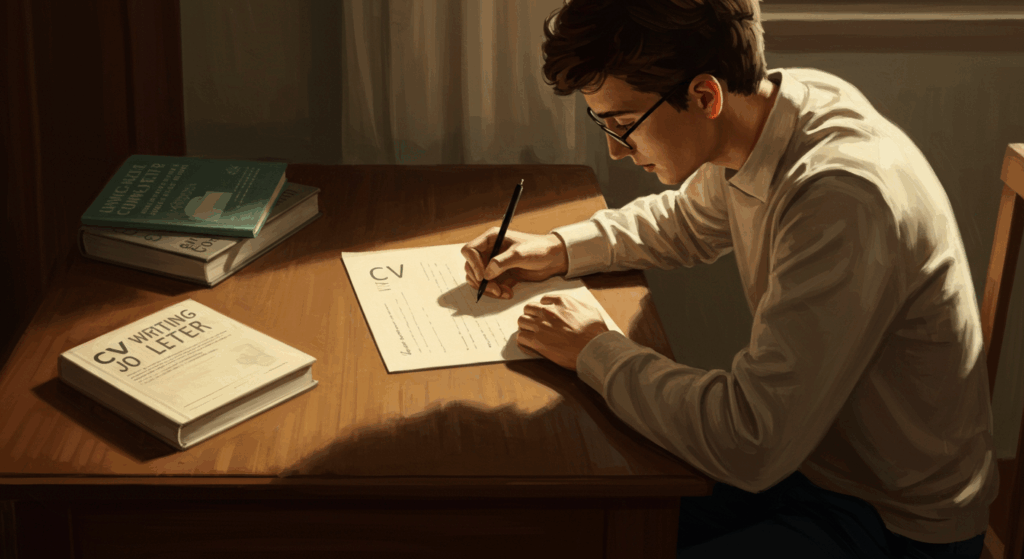Okay, let’s be real for a second: cover letters are kinda like the dating profiles of the job world. You know when you’re swiping on an app, and someone’s bio is just like “hi :)”? Yeah, that’s basically what sending a resume without a cover letter feels like. Technically, it’s something, but it doesn’t exactly show personality.
So, if you’re sitting there thinking, “Ugh, do people even read these things?” — the answer is both yes and no. Some recruiters skim, some ignore, some actually care a lot. But here’s the deal: writing one shows you put in that little extra effort. And in the messy chaos of applying for jobs, that effort can be what gets you noticed.
This is your introduction, your moment to step out from behind bulllet points and say, “Hey, I’m a real human, not just a PDF.” So let’s break down the overview of cover letter basics in a way that doesn’t feel like a boring textbook. Think of this as a friend-to-friend guide, full of small tips, casual jokes, and maybe a little tough love.
Why Cover Letters Still Matter (Yeah, Even in 2025)
I get it, we live in an age of LinkedIn quick applies, AI résumé scanners, and recruiters who probably have TikTok playing in the background while they work. But cover letters? They’re still like the secret sauce.
Here’s why:
- They add context. Your resume says what you did. Your cover letter says why it mattered.
- They show you care. Even if no one reads it deeply, the fact that you wrote it shows initiative.
- They help fill gaps. Maybe you switched careers, took a break, or your work history is a little… chaotic. This is your chance to explain without sounding like you’re making excuses.
Think of it like sending a text before meeting someone in person. The résumé is like, “Here are my stats.” The cover letter is like, “Here’s my vibe.”
The Core Basics: What Goes in Cover Letter?
Okay, let’s do a quick overview of the building blocks. You don’t need to write a novel. Honestly, one page max.
1. The Greeting
Skip the robotic “To Whom It May Concern.” No one talks like that. If you can find a name (via LinkedIn stalking, the company site, or good ol’ Google), use it. If not, “Dear Hiring Team” is fine.
2. The Introduction
This is your “hey, hi, hello” moment. Start strong. Mention the role you’re applying for and maybe throw in something about why the company caught your eye. No need for Shakespearean drama, just be clear and a little personal.
Example vibe: “I’m excited to apply for the Marketing Coordinator role at BrightSide because your campaigns are honestly cooler than half the stuff on my TikTok feed.”
3. The Body
This is where you connect the dots. Pick one or two experiences from your resume and explain why they’re relevant. Add a tiny story or example if possible — humans love stories more than random buzzwords.
4. The Closing
End it with confidence, not desperation. Think less “Please give me this job, I’m begging you” and more “I’d love to bring my skills to your team and would be happy to chat further.” Basically: confident, polite, chill.
How to Write Without Sounding Like a Robot
So many cover letters sound like they were written by ChatGPT… oh wait 👀. (Kidding, kinda). But for real, the goal is to sound like yourself, just the polished version.
Some quick hacks:
- Use contractions (I’m, I’ve, don’t). It makes you sound human.
- Cut the corporate clichés like “dynamic thought leader” or “synergy-driven innovator.” Ew.
- Sprinkle in personality, but keep it professional. A joke or casual phrase is fine, but don’t write like you’re texting your best friend at 2 a.m.
Remember, the cover letter is not your therapy journal. No “I’ve been dreaming of working here since I was 5.” Just… no.
Common Mistakes Everyone Makes
I’ve made them. You’ve probably made them. Let’s laugh (and cry) about it together.
- Too generic. If your cover letter could apply to any company, it’s not doing its job.
- Too long. This is not your memoir. Save the 3-page life story for your future autobiography.
- Repeating your resume. If you’re just copy-pasting bullet points, what’s the point?
- Being overly formal. You don’t need to sound like a 19th-century butler.
- Forgetting to proofread. Typos happen (heck, I’m leaving some lil’ imperfections here on purpose). But don’t spell the company’s name wrong. That’s an instant no.
A Quick Guide to Standing Out
This isn’t about gimmicks (no scented paper, no memes, no glitter bombs). It’s about tailoring.
- Do your research. Mention something about the company’s mission, product, or recent project. Show you actually know who they are.
- Make it about them. Sure, you’re great. But how do your skills solve their problems?
- Highlight soft skills. Teamwork, communication, adaptability — those things matter just as much as technical stuff.
If you’re stuck, try this formula:
I did [thing] at [place], which shows I can [skill]. That’s relevant to [company’s goal].
It’s simple but effective.
The Emotional Side: Why Writing a Cover Letter Feels Hard
Let’s be real — part of why cover letters suck is because they feel… vulnerable. Your resume is just data. But this? It’s you saying, “Here’s why I think I’m good enough.” That’s scary.
It’s like asking someone out. You could get rejected. They might ghost you. But sometimes, they say yes, and suddenly you’ve got a whole new chapter in your life.
So yeah, it’s awkward. But it’s also worth it.
A Mini Overview: Examples of Good Openers
- “I admire your company’s focus on sustainability, and I’d love to contribute my skills in project management to support that mission.”
- “As someone who’s been using your app daily (low-key addicted ngl), I was thrilled to see an opening for a UX Designer.”
- “With three years of social media marketing experience and a knack for creating content that actually makes people stop scrolling, I’m excited to apply for this role.”
See the vibe? Confident but not cocky, specific but not over the top.
Tips for Gen Z and Millennial Job Hunters
- Use your digital footprint. If you’ have got a solid LinkedIn, portfolio, or even a personal blog, link it.
- Don’t undersell part-time jobs. That coffee shop gig taught you customer service and stress management. That tutoring side hustle? Communication skills, baby.
- Adapt for remote roles. Emphasize independence, time management, and virtual collaboration.
Also, side note: if you’ve got gaps in your resume (mental health break, travel, freelancing), that’s fine. You can acknowledge it quickly in your cover letter without oversharing. Employers are way more chill about this now than they were years ago.
Final Thoughts: Keep It Real, Keep It Short
Here’s the big takeaway: your cover letter doesn’t need to be perfect. It just needs to feel like a clear, genuine introduction to who you are and what you bring. Think of it as a guide — not a script you have to follow word-for-word, but a framework to help you shine.
At the end of the day, recruiters want to know two things:
- Can you do the job?
- Will you be cool to work with?
Your resume answers #1. Your cover letter gives a peek into #2.
So next time you’re applying for that dream gig, don’t stress about sounding like a corporate robot. Just… be you, but the professional, slightly polished version.
A Friendly Pep Talk to Wrap Up
Look, writing a cover letter might feel like running a marathon in flip-flops. Awkward, slow, and kind of unnecessary. But trust me, it’s worth it. Every letter you write makes you better at telling your own story.
So, grab a coffee (or boba, or whatever your vibe is), put on your favorite Spotify playlist, and just start. Don’t aim for perfect. Aim for authentic.
Because the truth is: the right company isn’t just hiring you for skills. They’re hiring you for you. And your cover letter? That’s your first chance to say hi.
Now go write that letter — you’ve got this.









